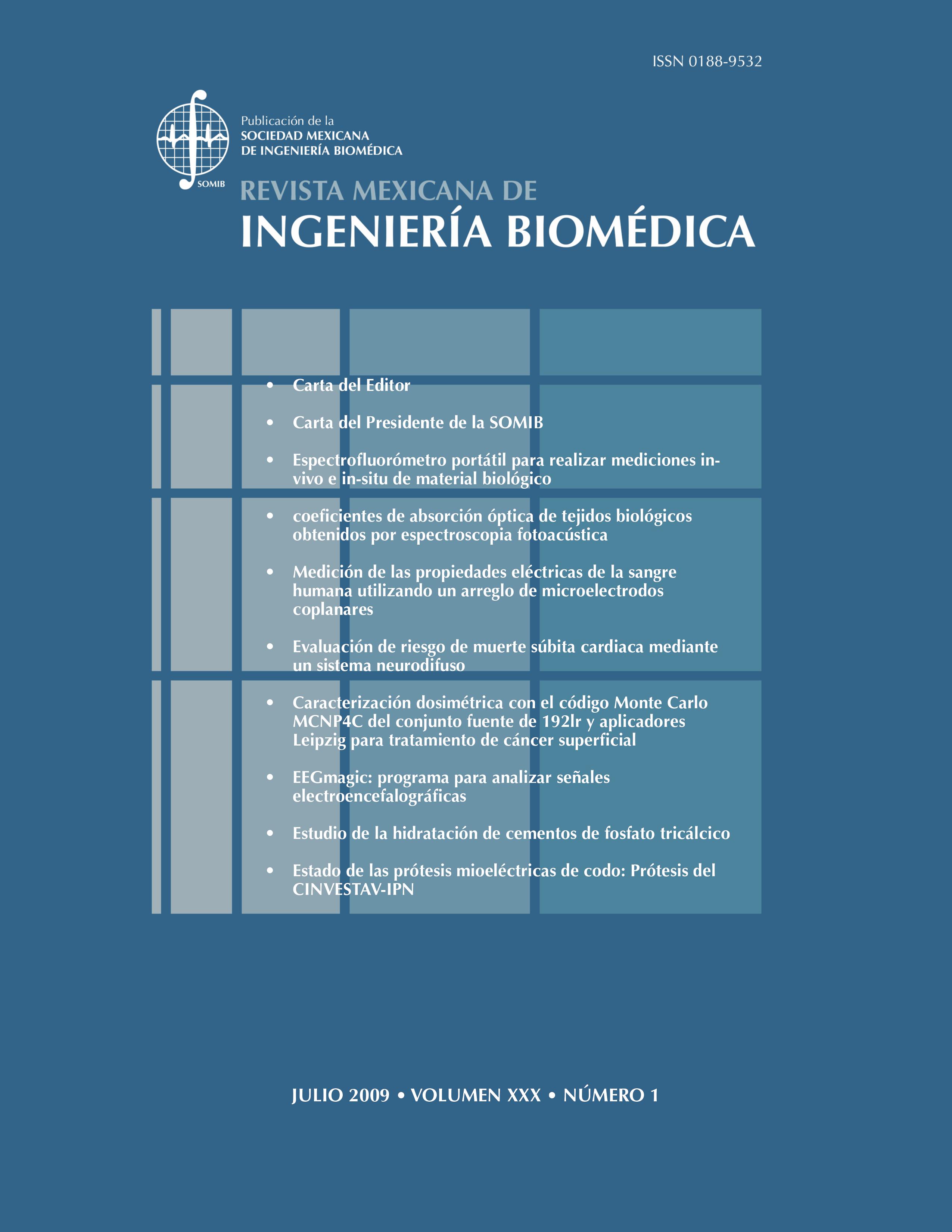Evaluación de riesgo de muerte súbita cárdiaca mediante un sistema neurodifuso
Abstract
Cardiovascular diseases are among the main causes of mortality in the world. Recently, more and more efforts are made to improve the prognosis and/or diagnosis by non-invasive methods development. Most of these methods like Heart Rate Variability (HRV) analysis, neuronal networks, fuzzy logic, and others, evaluate some kind of risk to suffer cardiovascular death or disease. Int his article we propose to mix fuzzy logic and neural networks to construct a neuro-fuzzy logic system that helps with the prognosis of sudden cardiac death risk, using as input data conventional clinical variables and more complex ones like HRV. The studied sample subjects were divided in three risk groups: low (n=54), medium (n=28) and high (n=7) according to two cardiologists opinion about their sudden cardiac death risk level, taking into account variables like: age, gender, body mass index, blood glucose levels, systolic blood pressure, diastolic blood pressure, smoking, antecedents of cardiovascular disease, and current cardiovascular illnesses. The constructed neuro-fuzzy networks was a backpropagation type, obtained by treatment of 80% of the data; the other 10% was used for crossed validation, and the remaining 10%, for testing. The sudden cardiac death risk levels, outputted by the network were: high, medium and low obtained by analysis of the conventional clinical variables related to all the sample subjects (n=89), producing a sensibility (SE) of 62%, specificity (SP) of 78%, and accuracy (ACC) of 73%. Then, using both sets of variables: conventional clinical and HRV ones as input data for the sample subjects (n=89), SE of 79%, SP of 87% and ACC of 79% were obtained.
Downloads
Downloads
Published
How to Cite
Issue
Section
License
Upon acceptance of an article in the RMIB, corresponding authors will be asked to fulfill and sign the copyright and the journal publishing agreement, which will allow the RMIB authorization to publish this document in any media without limitations and without any cost. Authors may reuse parts of the paper in other documents and reproduce part or all of it for their personal use as long as a bibliographic reference is made to the RMIB. However written permission of the Publisher is required for resale or distribution outside the corresponding author institution and for all other derivative works, including compilations and translations.




